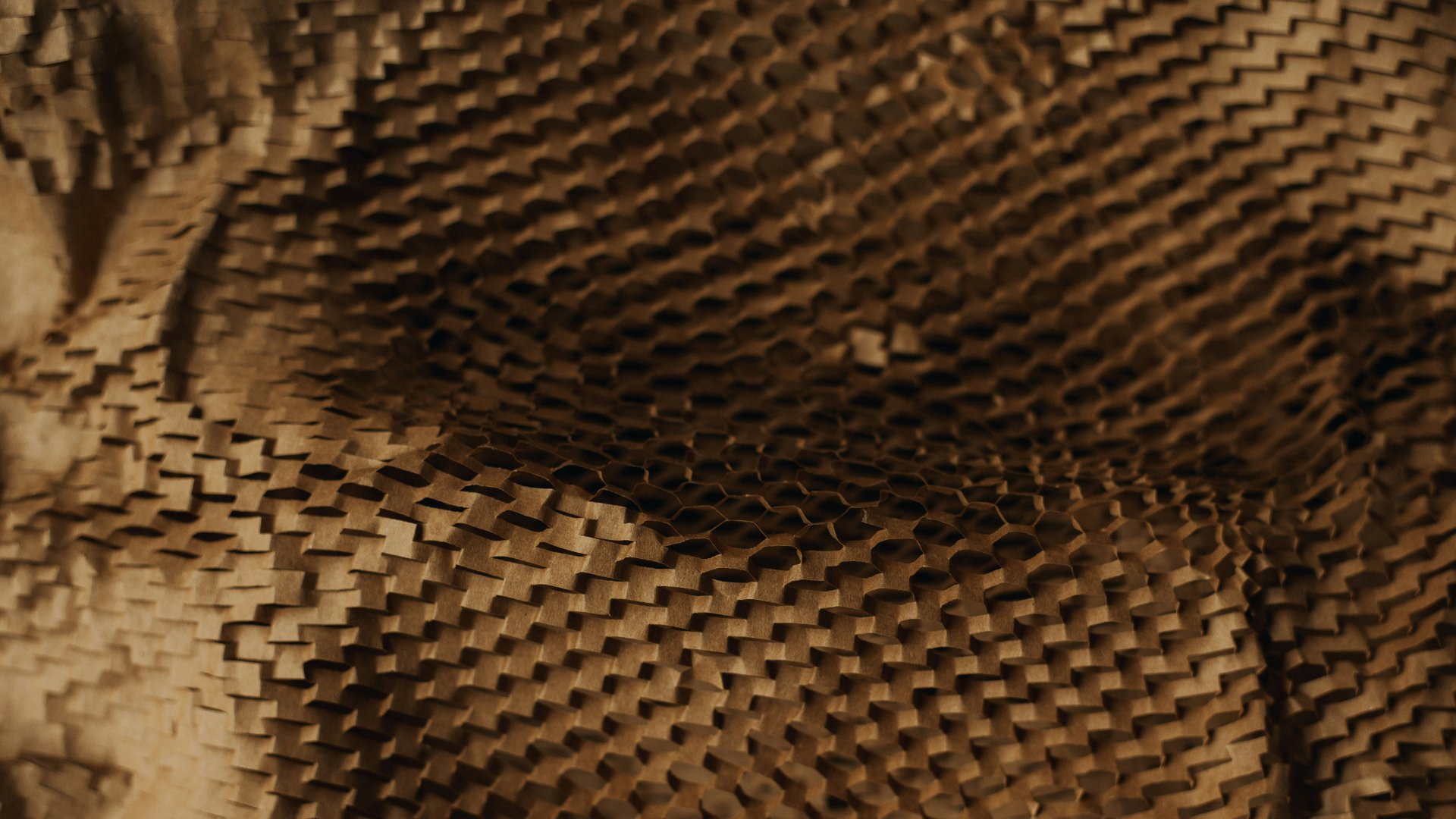
Sustainable Packaging Solutions Unwrapped

Photo by Annie Spratt
Over the last decade, 'Sustainability' has become a buzzword that means many different things to many people. But if we are going to take a deep dive into sustainable packaging solutions, we need to be clear about what these solutions are solving for.
Even the Oxford dictionary has several definitions for sustainability. With the most relevant being, the degree to which a process or enterprise is able to be maintained or continued while avoiding the long-term depletion of natural resources.
But if we use the term in relation to sustainable development or, in this case, the materials economy, sustainability is meeting the needs of the present without compromising the ability of future generations to meet their own needs.
A sober assessment of our current systems finds us meeting the extreme consumption demands of the present, but the linear materials economy that has grown exponentially over the last few decades now finds us firmly on track to compromise our future.
As such, sustainability has moved from a buzzword to a necessity. The drive toward 'eco friendly packaging' has become more than just a trend, and reflects a more profound shift in societal values and consumer behaviour.
What does sustainability mean for products and packaging?
Almost anything can be sustainable if it is part of the right system and everyone adopts and uses it correctly.
Complexity is a problem; the more complex we make things, the harder it is to build and maintain systems and frameworks to support sustainable outcomes. Simplification is a crucial building block of sustainability.
In essence, consumer packaging today is built broadly around five packaging material groups:
- Paper / Board
- Aluminium
- Glass
- Wood
- Plastics
Material groups 1-4 have clearly identified end-of-life pathways in most developed economies and are broadly considered recyclable and, therefore, sustainable in isolation. This is especially true when the material is as close to its original form as possible and not over-processed, increasing recyclability.
Before we jump ahead of ourselves, just because we can capture and recycle a material group does not make them sustainable packaging materials. Ore extraction, cutting down trees, energy-intensive processes required to manufacture, etc., do not support the dictionary definition of sustainability, but generally, we find a better balance between these materials over others.
However, expecting these material groups (1-4) to replace plastics is unrealistic. Any fragile balance we have (material groups 1-4) will be tricky to maintain if we remove conventional plastics without viable alternatives. We are seeing complexity being introduced to these material groups, upsetting the balance of capture and recycling. Over time, this will reduce the value and impact of effective recycling. Short-term quick wins are not a strategy that is sustainable over time.
Plastic, plastic everywhere
Plastics are complex from the start; we then demand more performance from the material, further increasing that complexity.
Plastics are technology-driven, cost-sensitive (relatively cheap), and driven by demand. Nearly 400 million tons of plastic are produced each year (with only 9% of it being recycled), and this demand has seen the plastics industry rapidly grow to a 700 billion+ revenue market (that's set to increase markedly over the next decades).
Plastics are innovative, but the growth in production and use has outstripped any balance point our developed global economies can manage.
Plastics are now all around us. They are in our houses and carpets, our clothes, our fridges and pantries, our vehicles, the air, sea, and soil. Our ability to 'maintain a certain level' has been lost, and we are scrambling to figure out what we're going to do.
The shift to a circular economy
Circularity, circular economy principles, and mono-materials are all approaches we are increasingly adopting.
Simplification of materials to support ease of capture and recycling is a direct response to the problem we have created during the last 40-50 years of linear (take-make-waste) plastic production. Circular economy 'systems change' can potentially bring some balance to the plastic materials group over the next decade or two, especially if governments lean into legislation to accelerate this process.
Even though this won't deal with the mountains of packaging waste we have already created, buried, and allowed to escape into our oceans; it sets out a pathway to potentially introduce some balance to the plastic materials we'll continue to use as we move forward.

Graphic by Elise Motalli ✏️ & Harald Friedl
Whilst Circularity has started to address the significant challenge of conventional plastics, we need to think smarter, faster, and more strategically about reducing growth in the sector to give the infrastructure time to catch up.
Consumption is not slowing down!
Sustainability is now a fundamental principle of design innovation
Sustainability extends beyond material choices. Innovative design that uses less packaging reduces waste. Consider system change to facilitate further reduction in materials used. Integrating smart technologies like intelligent labels and QR codes into packaging design enhances consumer engagement by offering detailed product insights and promoting recycling and composting efforts.
The importance of supply chain optimisation
Supply chain optimisation is often where the quick win can be found for packaging sustainability.
Any journey toward a sustainable packaging solution demands a thorough reevaluation of your supply chains. Optimising logistics to minimise carbon emissions and adopting sustainable transportation methods are vital to ensuring that every phase of the packaging process upholds the highest environmental standards.
Optimise your packaging design
Always start on the home front when optimising your supply chain. How can your packaging design be streamlined? Can you leverage materials and manufacturing process innovation to use lighter and thinner materials? Sometimes, the simplest path to sustainable packaging design is ensuring that your packaging minimises space. This can reduce the number of shipments required and (when used with lighter materials) can help reduce emissions.
Source local
In a global economy, the cheapest option is often found overseas and involves transportation across long distances and high carbon emissions. Sourcing locally, shipping in bulk and or repacking will reduce the environmental impact of your product or packaging with the added bonus of increasing the economic resilience of local communities.
Involve your whole supply chain in the process
By having a sustainability strategy and sharing your sustainability plans with your entire supply chain, you can tap into their unique insights and networks to help you achieve your goals. Maintaining an open dialogue with suppliers and all stakeholders can help foster deeper partnerships.
Not everyone will be willing to get on board… but it's best to find this out upfront. Given Upton Sinclair's call that "It is difficult to get a man to understand something when his salary depends on his not understanding it," it can be beneficial to engage an independent arbiter (such as Phantm) to help identify the best suppliers for your product needs and sustainability goals.
Materials innovation
Innovation in novel and renewable biomaterials as a replacement for conventional plastics is critical.
We are seeing accelerated growth in natural polymer developments worldwide. The availability of regenerative polymers has increased by 200% in the last three years, and this increase is set to grow further as investment in manufacturing facilities and technologies comes online.
Biomaterial (regenerative polymers) is another building block and should form the 6th pillar in the materials groups list. Whilst we know regenerative polymers can be effective drop-in replacements for plastics, we need to embed end-of-life (EOL) pathways in the existing and new infrastructure for these innovative materials, enabling capture, recycling and/or composting. Creating pathways for end-of-life (especially for compostable packaging) is a big challenge. We need to work with governments, states, and associations prepared to promote and implement policies to accelerate this process.
Adding chemicals to paper to make it fat and oil-resistant and adding PE coatings to board so they still comply with pulp recycling processes, these actions don't solve the problem. These only increase complexity, making it harder to keep these materials sustainable.
We need a replacement for conventional plastics that runs alongside the existing system but is fully integrated. In the same way Solar in isolation does not fix the green energy challenge, we must combine green technologies and systems to accelerate towards a better balance.
Consumption should drive innovation
Global consumption increased by 43% between 2015 and 2024 and is forecast to increase to 83% between 2015 and 2029. The global population has grown from 1 billion in 1800 to 7.9 billion in 2020.
4.5 billion low-income people living in developing countries collectively spend more than double ($5 Trillion) the middle and higher-income segments combined ($2.3 Trillion) on food and beverage consumption, accounting for the largest increase in spending.
Much of this food and beverage consumption in the lower-income segments is high-volume, lower-quality products packaged in pre-packed food packaging to support shelf life (time to sell and consume).
Whilst developed economies struggle to capture and recycle plastic waste and products and continue to invest billions in creating better infrastructure to process their ever-increasing plastic packaging waste, we need to look beyond what we are currently doing.
We have to consider what works beyond the boundaries of our street, our state, and our country, what works for the rest of the people and planet, and where the problems are emerging. Whilst it might not be 'in our backyard', the material solutions and systems we develop and consider need to work for everyone. They need to be simple, not complex, so that they can be easily supported in communities across the globe.
Making better packaging and product decisions is good for business
Embracing sustainable packaging has its challenges.
Adopting a phased approach enables you to make better-informed decisions and prioritise what can be done today and what the direction might be in the future.
Phantm’s A-R-T process is a simple first step to making a difference.
If you want to learn more drop us a message HERE or by clicking the button below.
One of our team would be more than happy to guide you on the path to sustainability and reducing your environmental impact.
Arrange a call with our team chat about your path to sustainable packaging solutions
Let's Chat

